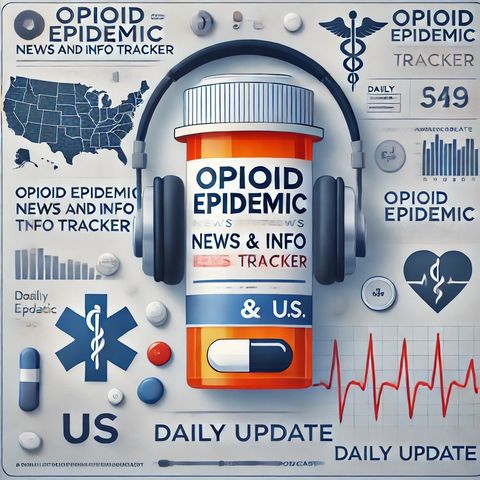"Opioid Epidemic Decline: Targeted Interventions Reduce Overdose Deaths"

Descarga y escucha en cualquier lugar
Descarga tus episodios favoritos y disfrútalos, ¡dondequiera que estés! Regístrate o inicia sesión ahora para acceder a la escucha sin conexión.
"Opioid Epidemic Decline: Targeted Interventions Reduce Overdose Deaths"
Esta transcripción es generada automáticamente. Ten en cuenta que no se garantiza una precisión absoluta.
Descripción
## The Opioid Epidemic: Recent Trends and Efforts Towards Safer Prescribing The opioid epidemic, a long-standing public health crisis in the United States, has shown a glimmer of hope with...
mostra másThe opioid epidemic, a long-standing public health crisis in the United States, has shown a glimmer of hope with recent data indicating a significant decline in fatal opioid and methamphetamine overdoses. According to the latest statistics, overdose death rates have fallen by more than a third in communities with expanded access to treatment and naloxone, highlighting the effectiveness of targeted interventions.
### Decline in Overdose Deaths
As of recent reports, communities that have enhanced access to treatment and naloxone have seen overdose death rates drop to 8.9 deaths per 100,000, compared to 14.1 deaths per 100,000 in areas without such access. This reduction underscores the critical role of accessible treatment and emergency response measures in combating the opioid crisis.
### Expanding Treatment Access
Despite these positive trends, there remains a gap in the utilization of available treatments. A recent study revealed that while more doctors are now qualified to prescribe buprenorphine, a key medication for opioid addiction, there has been little change in the number of people receiving this treatment. This disparity suggests that awareness and access to these medications are still significant barriers.
### Public Awareness and Prescribing Practices
Public awareness about the ability of primary care doctors to prescribe anti-opioid medications is also a concern. Many Americans and their loved ones are unaware that family doctors can prescribe these lifesaving medications, further complicating the treatment landscape.
### Surgical Opioid Prescriptions
The path to opioid addiction often begins with post-surgery pain relief prescriptions. Recent studies have identified specific surgeries that contribute disproportionately to opioid prescriptions. For example, tonsillectomies, knee surgeries, and cesarean deliveries are among the procedures most associated with opioid prescriptions. These studies emphasize the need for safer prescribing practices, such as using non-oidal anti-inflammatory drugs like aspirin and ibuprofen, to reduce the risk of addiction.
### Future Directions
As the U.S. continues to grapple with the opioid epidemic, the focus is shifting towards more targeted and safer prescribing practices. Surgeons and healthcare providers are advocating for alternative pain relief methods and stricter guidelines for opioid prescriptions post-surgery. The reduction in overdose deaths in communities with expanded treatment access serves as a model for broader national strategies.
In conclusion, while the opioid epidemic remains a pressing issue, the recent decline in overdose deaths and the
Información
| Autor | QP-4 |
| Organización | William Corbin |
| Página web | - |
| Etiquetas |
Copyright 2024 - Spreaker Inc. an iHeartMedia Company
